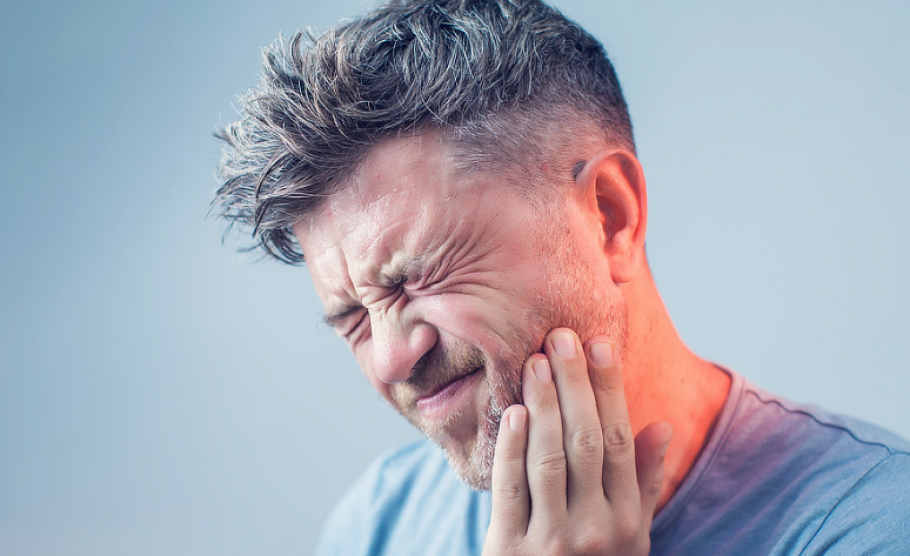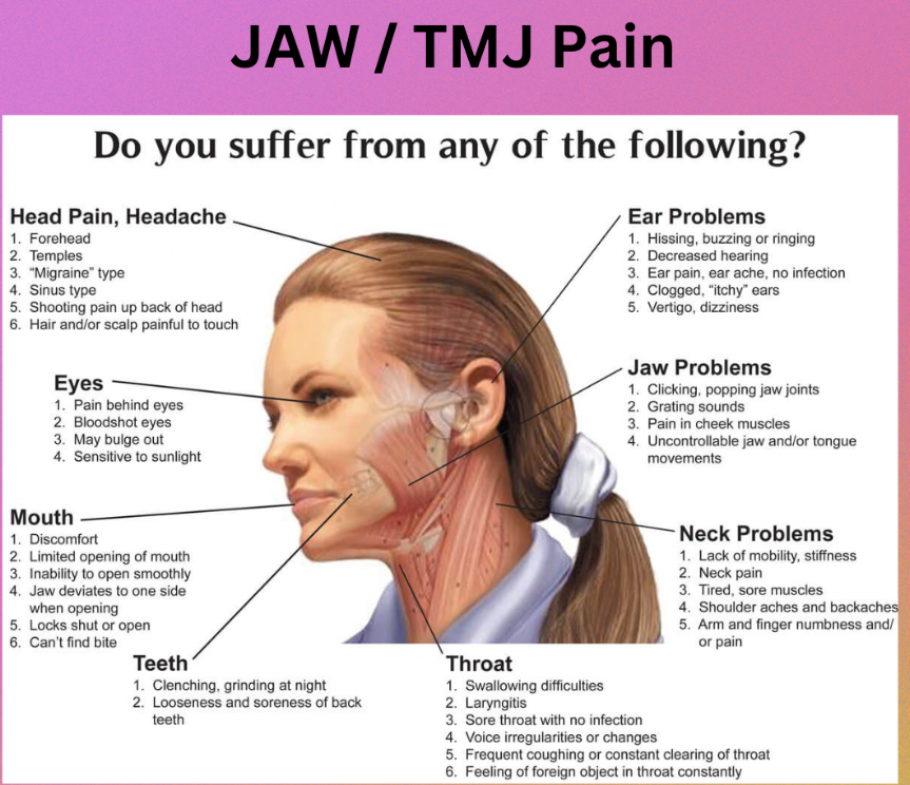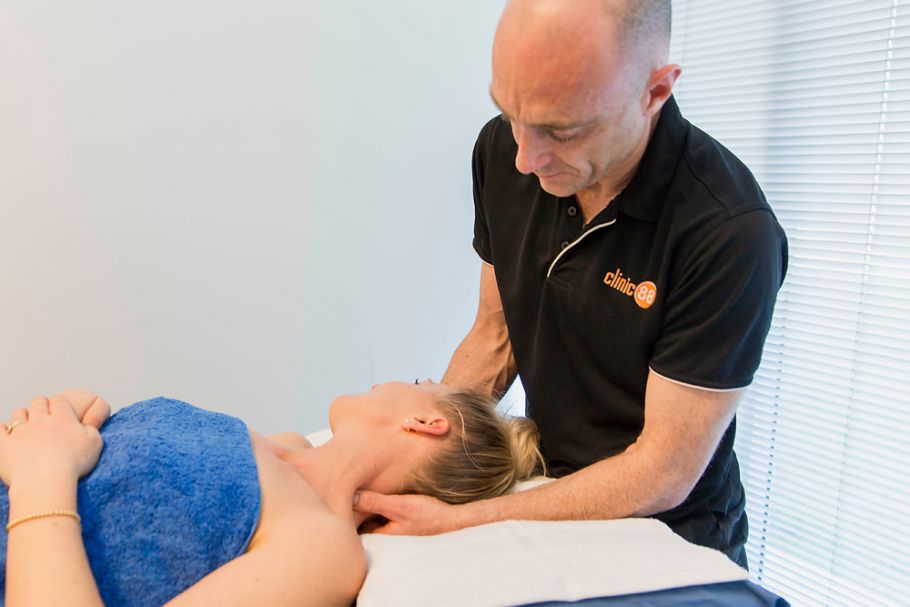Bruxism – Jaw Clenching
Bruxism is characterised by excessive clenching or grinding of the teeth. It is a habitual activity performed, often unconsciously, to excess.
Ideally, our teeth shouldn’t touch unless we are chewing or sometimes while swallowing. Sufferers of bruxism can in some cases experience up to a whole months’ worth of wear and tear on the teeth in a single night! Luckily, there are lots of ways to prevent and manage the condition.


Who does it affect?
Bruxism affects 22.22% of the population, with 21% experiencing nocturnal bruxism and 23% awake bruxism. The condition is common in children, with 14% to 20% prevalence rates being reported, although most children will grow out of it as they approach their late teens. In adults, awake bruxism is most prevalent in women, while nocturnal bruxism is represented equally between the sexes.
It’s believed that these figures under-report the true prevalence of bruxism as many studies rely on self reporting.
Why do some people Brux (Jaw Clench)?
Sleep Apnea – Clenching and Grinding during the night can be an attempt to keep the airway open by bringing the jaw forward and locking it in place.
Quiet Reflux – Nocturnal reflux causes us to chew which stimulates salivary glands in the mouth to neutralise stomach acid and protect the teeth.
Medications – some medications, most commonly SSRIs (anti anxiety, depression medications etc) can include an increased risk of bruxism as a listed side effect.
Stress – Emotional, physical and psychological stress, anxiety and depression can all be linked to increased risk of bruxism
Habits – Chewing gum excessively, poor tongue posture, and lip and tongue biting have been linked to bruxism.
Posture – Poor functional posture can lead to dysfunctional forces on the TMJ and jaw that can lead to compensatory activation of the jaw musculature.
Lifestyle – Smoking, alcohol and caffeine, as well as recreational drugs can raise your risk of bruxism.
Genetics – Although not fully understood, research indicates that bruxism frequently appears in more than one member of the same household, suggesting potential shared environmental or genetic factors.


Symptoms and Result of Bruxism
- Grinding or tapping noises during sleep (usually noticed by a partner or parent).
- Waking up with teeth or jaw pain.
- Pain in the jaw muscles when chewing and talking.
- Headaches.
- Neck Pain (stiffness, sore muscles).
- TMJ Pain (stiffness, crunching, catching).
- Ear Issues (Pain, buzzing, dizziness).
- Trismus (restricted mouth opening).
- A wear line in the enamel along the bottom front teeth.
- Thermal hypersensitivity.
- Development of Tori (Bony growth along the base of the gums).
- Scalloping of the tongue.
Physical changes as a result of bruxism.
The first signs of bruxism most people will be aware of are the consequences of sustained load on the teeth and jaw. These will most commonly be wear of the tooth enamel, and increased activity of the muscles of your jaw. The former will most likely be picked up by your dentist during your check ups. Most people will experience muscular pain from overuse of the masticatory muscles (the muscles you use to chew and talk) with even minor episodes or sustained clenching.
The most noticeable of these, and generally the first to become symptomatic will be the Masseter, the muscle on the sides of your jaw. Lightly clench your jaw and run your fingers along your cheek towards your ear, you’ll feel the masseter pop up under your fingertips.
Above your ears is the scallop shaped Temporalis. Place your splayed fingertips above and forward of your ears and gently clench your teeth, you should feel this muscle pop up.
These two muscles will start to hypertrophy and become symptomatic if the condition is chronic and can lead to headaches and referral pain in both the head and the teeth.
While many cases are minor and relatively harmless, untreated bruxism can lead to degeneration of the teeth and in some cases the TMJ, which is the joint where your jaw meets your skull.
What Treatment is Available
If you suspect you are bruxing, or are experiencing any symptoms related to bruxism, It’s best to address it sooner than later. If you notice any change in your bite or tooth pain, reach out to your dentist. They can assess and fit you with an appliance such as a night guard if indicated. This will protect the surface of your teeth and provide some respite to those chewing muscles.
If you are experiencing muscular pain in the head or jaw, headaches or TMJ pain, then Clinic 88 can help (and if your presentation is out of our scope, or we feel that a multidisciplinary approach would be beneficial, we know some amazing people who can assist!).
How Soft Tissue Therapy can help.
No two bodies are the same, and no two cases of bruxism are the same. The team at Clinic 88 can help you in many ways
- Education on whys and hows of your pain and tension. This includes identifying the patterns and compensations that have led to your presentation. Knowing why is half the battle!
- Postural assessment and treatment to reduce load on the spine and jaw. Looking at how your spine and jaw moves tells us a lot about how your body manages gravity and the loads it experiences day to day. This allows us to tailor a treatment plan suited to your needs.
- Hands on treatments to reduce muscular activity and encourage proper joint function to reduce symptoms and promote healthier movement patterns. This commonly includes treatment of the spinal, neck and facial muscles as well as some gentle joint mobilisations if indicated to restore optimal function of the spine, neck and jaw.
- Instruction on movement and behavioural changes to help you create the best possible environment for your jaw. Having identified the causative factors of bruxism, now it’s time to find ways to change them. This can include mindfulness techniques to be aware of clenching and self massage to manage that. As well as nighttime stretching, breathing and self massage routines to calm the nervous system and the muscles of the jaw to reduce the chance of nocturnal bruxing.

Frequently Asked Questions
How soon will I see results?
There is no one answer for every case, as some cases need dental intervention. Although with regular treatment, dedication to changing habits and being consistent with home care, we usually see positive changes within 4 weeks.
Ok great my pain is gone! But what do I do if it comes back?
One of the most important aspects of our treatment plan is to provide you with a robust toolkit to manage any flare ups. Let’s face it, life isn’t always smooth sailing and recovery isn’t either. Popping in for some regular maintenance to keep things functioning well and reviewing your home care plan is a recipe for success.
Do I need a night guard? Is my night guard right for me?
We get asked this all the time and while we can give you advice that’s within our scope, the best thing to do is consult your dentist or orthodontist to see if an orthodontic appliance, or adjustment of your existing appliance is suitable for you.